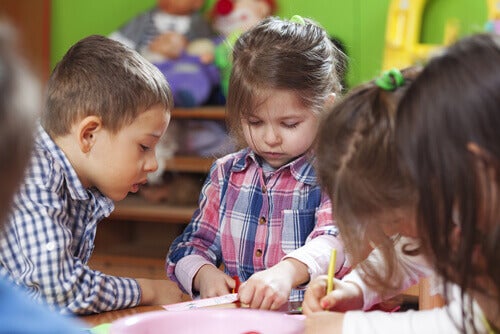The current Montessori method would promote the natural development of children’s skills based on exploration, collaboration with other peers, curiosity, play and communication. Learn more below.
Maria Montessori is the creator of an educational method that has been a revolution, the scope of her proposals was such that her name transcended her area of expertise, the method she proposed placed a particular emphasis on the game, designating it as the ideal means for the development of various skills and skills in children.
- An example of application can be found in many kindergartens.
- We are talking about a non-compulsory training that focuses on play.
- Fun and flexibility.
- Seeking children to be spontaneous and have initiative.
- In the end.
- Maria Montessori’s method promotes the independence of the little ones.
- While acquiring fundamental values of coexistence and cooperation.
- Starting with respect for his peers.
Currently, we can analyze the Montessori method based on the basic principles that govern it, although its implementation can involve different adaptations depending on the preferences of the educators, fundamentally you can find the following.
For starters, the Montessori method encourages discovery-based learning. Discoveries that, on the other hand, are given thanks to the innate curiosity that we all have. He just thinks we always learn better when something makes us curious and we want to ask “find out more. “Precisely, this method seeks to take advantage of children’s natural inclination to ask questions and find answers.
In addition, this method does not forget that the environment must meet the needs of each child depending on their characteristics (age, culture, existence of a diagnosis: hyperactivity, autism, etc. ). To do this, add the ability to adapt the method to the natural material with which each child can interact and touch. We refer to wood, earth and other materials that are not artificial.
The idea is that all the games offered have a collaborative component and are always supervised, directed and coordinated by the teacher, who should intervene as little as possible in the process of learning children: it will try to be just a guide.
In conclusion with the principles governing this method, it should be noted that the Montessori method seeks to form large classrooms and in different age groups (with a maximum difference of 3 years), that is, children between the ages of 6 and 9 years, for example, together in a classroom so that they can interact not only with colleagues their age. This can be very beneficial as a stimulus.
Fortunately, the Montessori method has survived the passage of time and today its spirit is part of the pedagogical strategy of different schools. A type of training where a lot of work is done with the game, it promotes the independence and autonomy of the child and his interaction with various elements that arouse his curiosity. In short, the method takes advantage of the natural inclination towards the game and the pleasure that occurs at this stage to transform it into the main educational engine.
However, as we immerse ourselves in primary education, the picture changes, children spend hours sitting looking at the teacher, getting reinforcements to be silent (or punished for not doing so), not being able to talk and be attentive for long periods of time. . Lessons that are happening, with a dynamic specialized in the end of any kind of motivation intrinsic to learning.
There are several schools that have opted today for the Montessori method, but despite all this, there may be a doubt The Montessori method is reserved for children from 0 to 6 years old?Although most schools currently offer this method only for this age group. , the case is that Maria Montessori designed it for use until the age of 12.
However, the Montessori method today could also be applied in high school, Maria Montessori, although she did not have time to design and develop it completely for this stage, left established guidelines on the steps to take with older children.
The data tells us that the education that occurs after primary school annoys the student, far from motivating him, makes him think that going to school or college is useless, this situation should lead to rething the way we teach. to promote competitiveness and where a note calls us failures or intelligent, while still being blind to the priority objective: that the student feels motivated, in addition to the evaluation, to understand the world around him.

